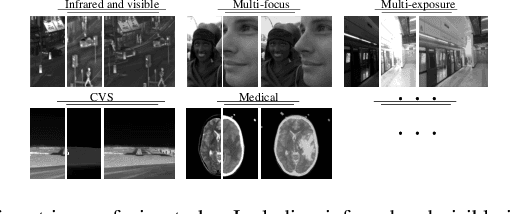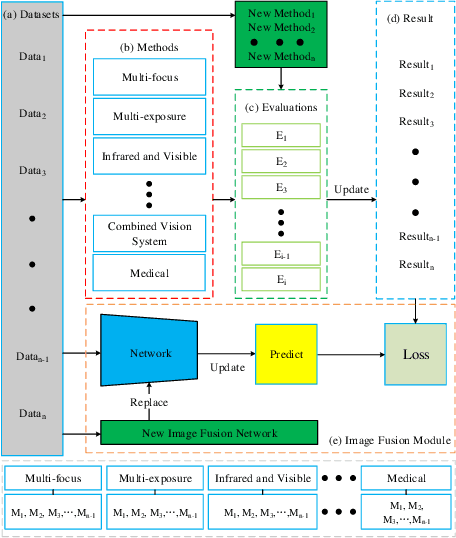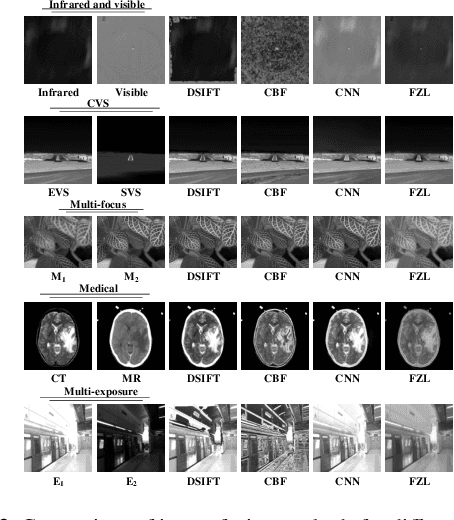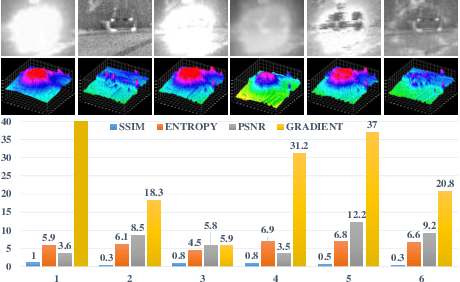AE-Net: Autonomous Evolution Image Fusion Method Inspired by Human Cognitive Mechanism
Paper and Code
Jul 17, 2020



In order to solve the robustness and generality problems of the image fusion task,inspired by the human brain cognitive mechanism, we propose a robust and general image fusion method with autonomous evolution ability, and is therefore denoted with AE-Net. Through the collaborative optimization of multiple image fusion methods to simulate the cognitive process of human brain, unsupervised learning image fusion task can be transformed into semi-supervised image fusion task or supervised image fusion task, thus promoting the evolutionary ability of network model weight. Firstly, the relationship between human brain cognitive mechanism and image fusion task is analyzed and a physical model is established to simulate human brain cognitive mechanism. Secondly, we analyze existing image fusion methods and image fusion loss functions, select the image fusion method with complementary features to construct the algorithm module, establish the multi-loss joint evaluation function to obtain the optimal solution of algorithm module. The optimal solution of each image is used to guide the weight training of network model. Our image fusion method can effectively unify the cross-modal image fusion task and the same modal image fusion task, and effectively overcome the difference of data distribution between different datasets. Finally, extensive numerical results verify the effectiveness and superiority of our method on a variety of image fusion datasets, including multi-focus dataset, infrared and visi-ble dataset, medical image dataset and multi-exposure dataset. Comprehensive experiments demonstrate the superiority of our image fusion method in robustness and generality. In addition, experimental results also demonstate the effectiveness of human brain cognitive mechanism to improve the robustness and generality of image fusion.
 Add to Chrome
Add to Chrome Add to Firefox
Add to Firefox Add to Edge
Add to Edge